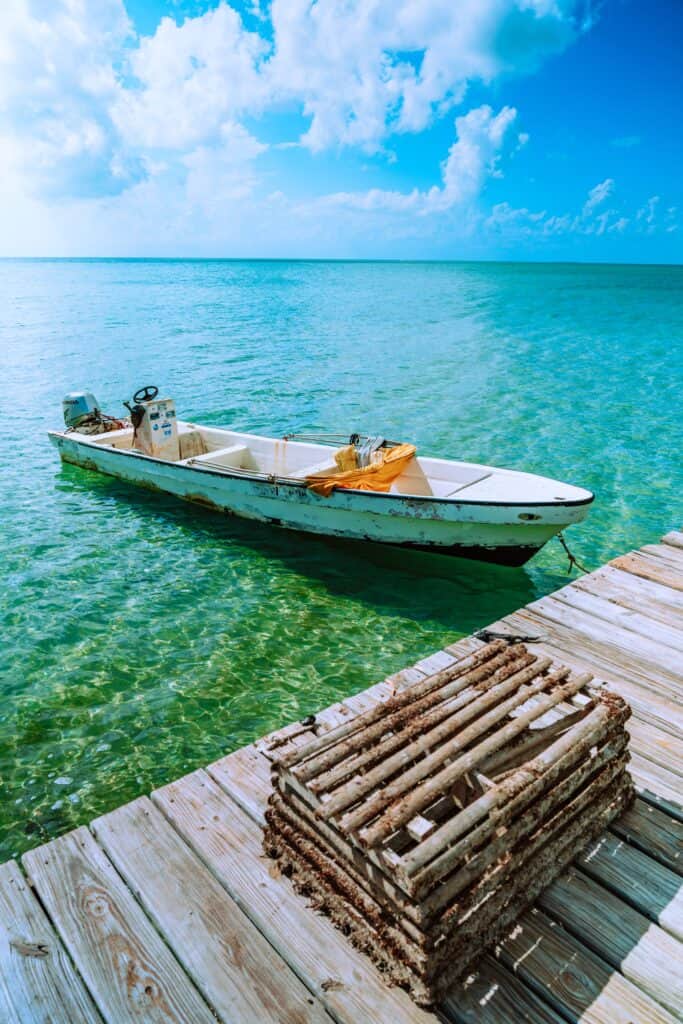With three of the Western Caribbean’s four atolls under varying degrees of protection, Belize continues to make efforts to sustainably regulate its fisheries industry of finfish and other commercial species.
However, the small-scale, wild-capture Caribbean Spiny Lobster (Panulirus argus) fishery may be the most profitable as exports of frozen lobster tails to the USA contributed at least 9.6 per cent of total national exports in 2021 alone.
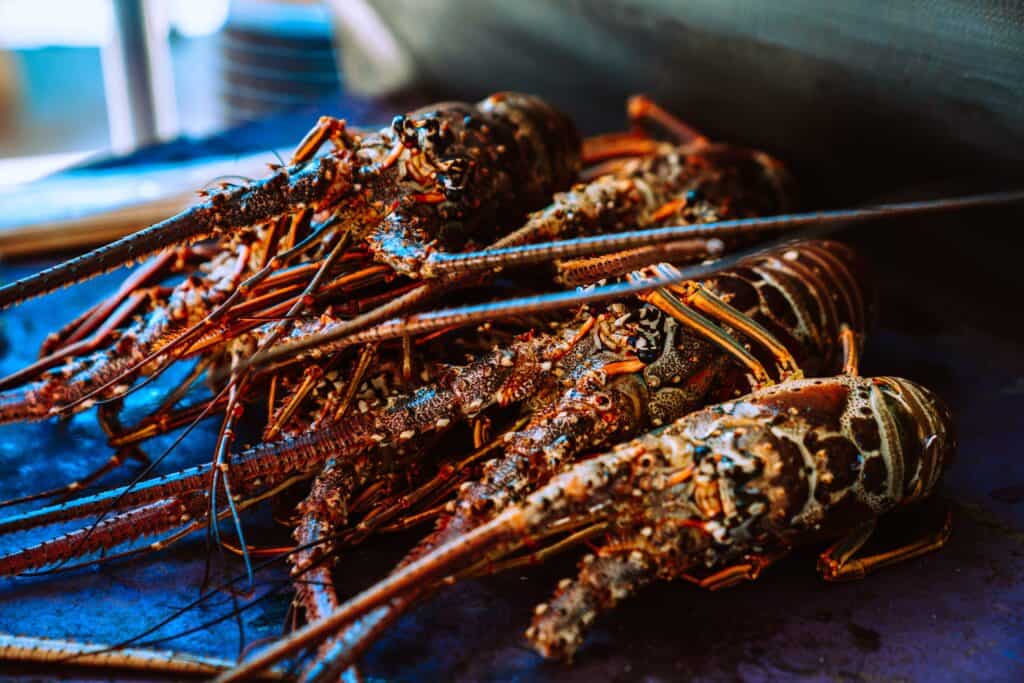
In Belize, the Turneffe Atoll Marine Reserve (TAMR) and coastal communities of Northern Belize are two important locations for lobster fishing.
Approximately 23 per cent of national lobster landings come from traditional sailboat fishers in the TAMR and in Northern Belize, over 2,700 fishermen can often be seen returning home after weeks at sea.
Though ecological sustainability studies of the fishery are ongoing, what can Belize’s main commercial fishery of the Caribbean Spiny Lobster tell us about its sustainability and livelihood resilience against pressures like possible exploitation, increased competition, climate change, and any lingering impacts of COVID-19?
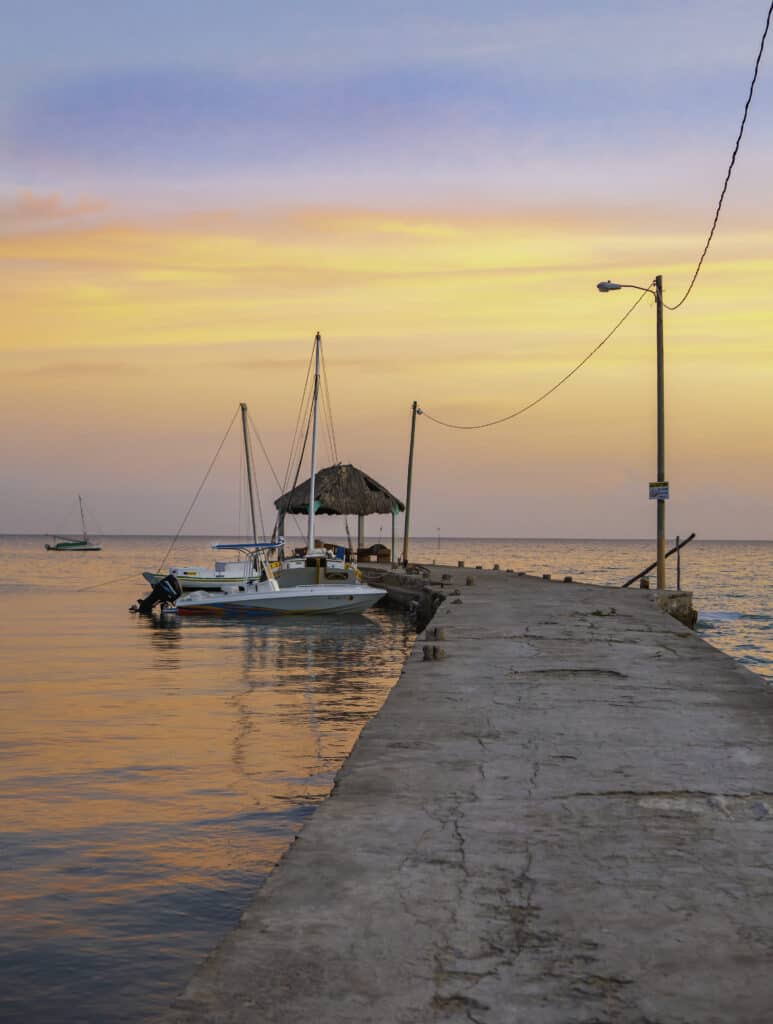
The rise of lobster as a delicacy
A delicacy by any definition today, lobster was seldom chosen for commercial fisheries in Belize in the last five decades.
Instead, it was even once considered a dish eaten by underprivileged coastal communities for sustenance.
Now, it’s integral to the cultural identity and livelihood of many Belizean fishing communities, fanned by a growing demand through tourism.
In 2020, the UN Food and Agriculture Organisation reported that fisheries around the world faced significant losses due to the pandemic’s restrictions on movements, a shift in consumer demand, absence of tourism, and disruption of supply chains.
A cause for concern, post-pandemic, would be possible over-exploitation-–to make up for “lost” time.
However, there’s a passion among small-scale fishermen to maintain their way of living to support their communities, especially in Sarteneja Village.
Sarteneja, the largest fishing community and the second-largest village in Belize, is synonymous with soapy-blue waters, omnipresent hand-carved wooden sailboats, and naturally, artisan fishing.
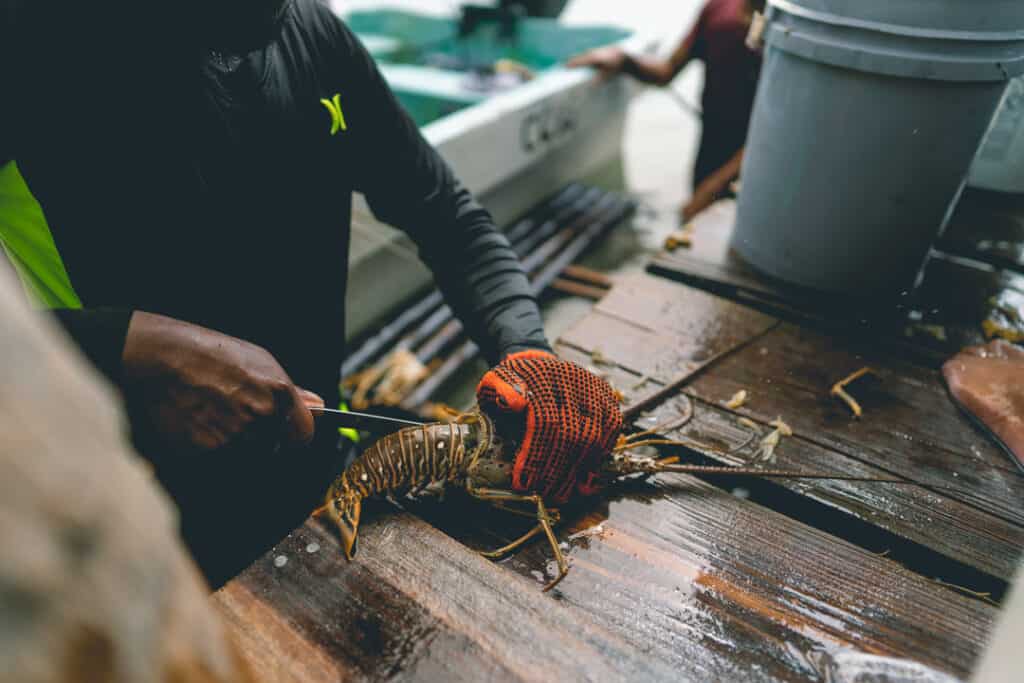
How Belizean fisherfolk use free diving to catch lobsters
Venturing out from their villages of Chunox, Sarteneja, and Copper Bank, up to seven fishers per boat will spend an average of two weeks at sea in their wooden sailboats or 30-foot lighters.
Then, they’ll tether and paddle out over the reef in smaller canoes to harvest.
In Belize, free diving fishers harvest spiny lobsters with a hook stick or from traps, which look like small coffee tables set on seagrass beds in shallower areas.
Offering shade, lobsters are attracted to the relative protection of these wooden tables once the sun is up and they can’t return to the reef—ultimately becoming trapped.
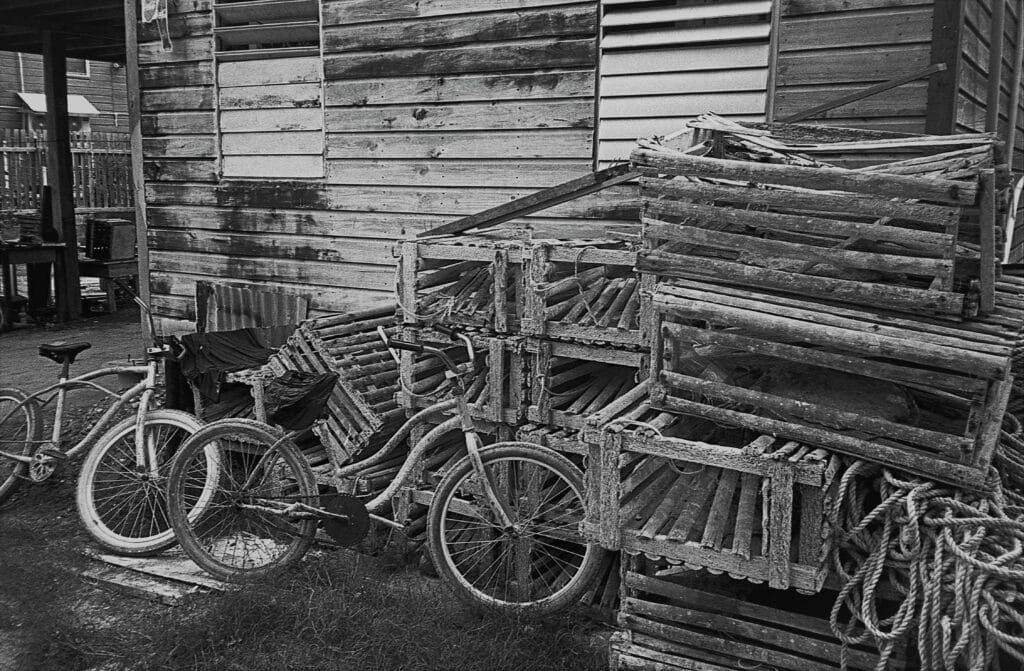
Stripped from the palmetto palm, this skill has been handed down from generation to generation and made by the fishermen themselves.
They might toss back bycatch, and if the carapace is under three inches long, lobster is also thrown back into the sea, in line with regulations.
Traps need a day or two to replenish, which is when fisherfolk will revert to skin dive patch reefs in a single breath, gaffing individual lobsters by hand.
Sarteneja Village is one of the primary stakeholders of the Belize Barrier Reef System: vital buy-in has given community members the capacity to ID declining states of marine resources while offering a medium for the critical need to reduce fishing pressure.
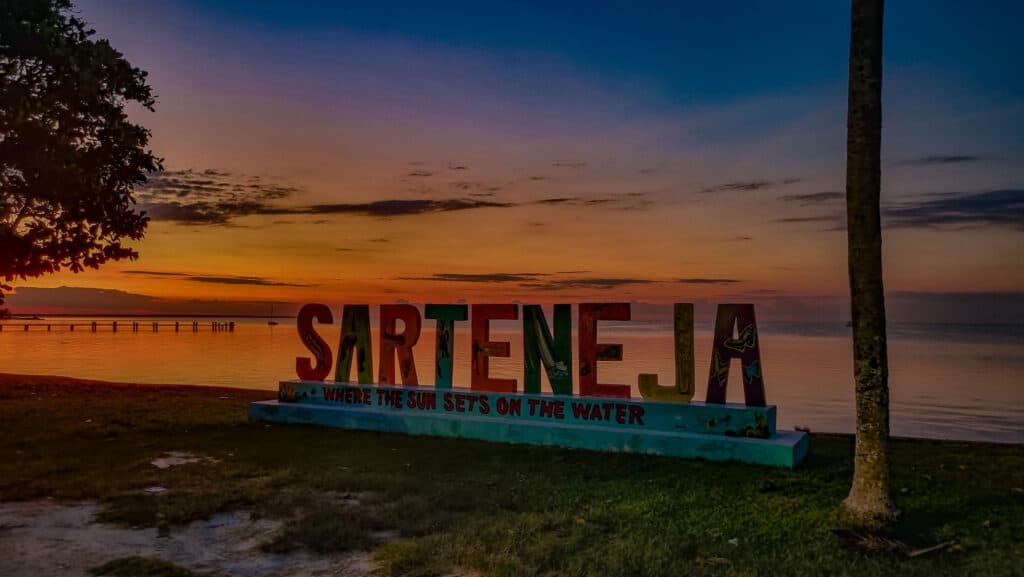
Strengthening Belize’s Fishing Regulations
In 2022, the Belize Fisheries Resources Act came with a few policy amendments, with two changes standing out the most.
First, the open season now begins 15 days later, running from July 1 through March 31 of the following year before its 8-month (replenishing) closure.
Secondly, the minimum size of lobster tails that can be legally sold increased from 4 ounces to 4.5 ounces; any fisherfolk found by enforcement teams with lobster tails that are less than 4.5 ounces in weight, will now immediately be charged for possessing undersized fisheries products.
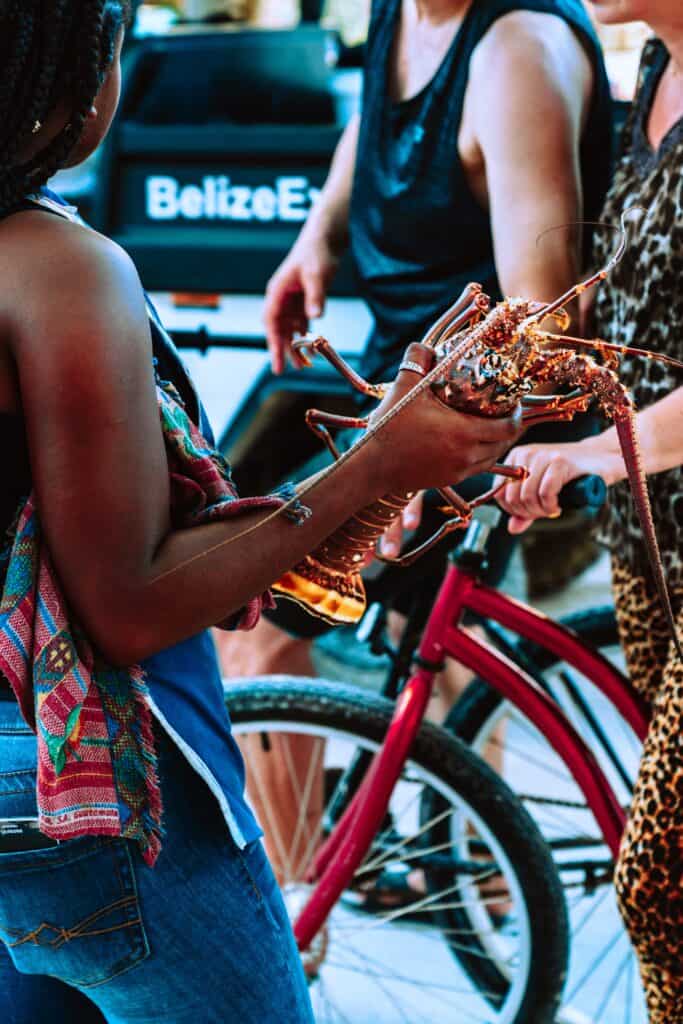
Though a small numerical change, it came under heavy controversy by Sarteneja fishers objecting to 4 ounces being insufficient for maturity.
But the science shows lobsters grow relatively slowly—taking up to seven years to reach full maturity.
Even though berried hens appear to be clustered with eggs (in numbers up to 20,000), the chances of their larvae making it to adulthood are exceptionally slim.
For the first four weeks, a newborn lobster is less than one centimetre in size, technically classed as plankton, and highly vulnerable.
After community consultations with stakeholders from the likes of Hon. Andre Perez, the Minister responsible for fisheries, in Sarteneja, the 2023-2024 lobster season opened this month with a minimum tail weight of four ounces.
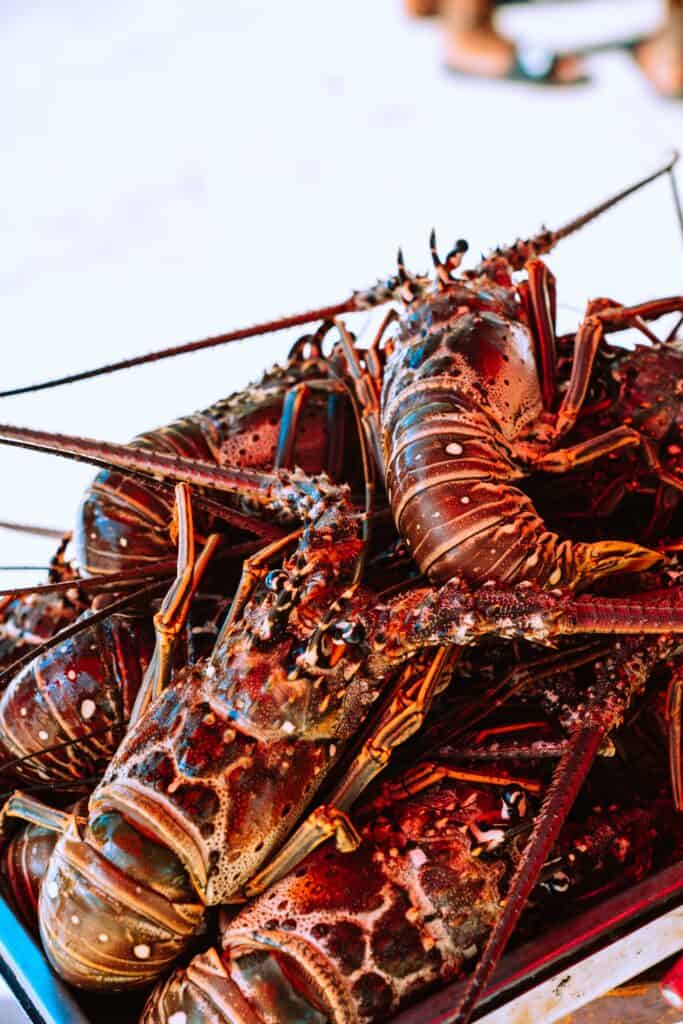
A three inch minimum carapace length is another fixed regulation, while possession of any soft shell of a pregnant female (berried) is illegal, as is the removal of any eggs, spawn, setae, or fibres.
It’s illegal to have any filleted or diced lobster tail, with fines starting at BZD $1,000 each, or jail time.
Global ratings of Belizean fisheries
In tandem with efforts by industry, government, NGOs, and academia to address challenges in the fishery, the Belizean lobster fishery boasts an ‘A’ rating on the global indicator tool, FisheryProgress.org.
But robust policies—and informed decision-making—require being backed by scientific evidence, and that also includes citizen science from coastal communities like fisheries-dependent Sarteneja village.
As we’ve seen in Belize, using this commercially important fishery, keeping stocks healthy can open new markets, satisfy eco-minded consumers, and ensure that there will always be lobsters to catch in the future.
